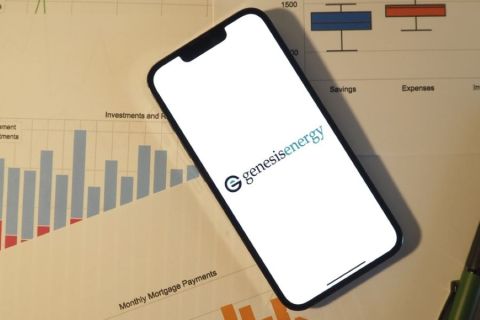Fuel cells. Are they really viable? More importantly, what do they mean to the oil and gas producer? The two, small words will mean a lot, in terms of these miniature power plants' anticipated effect on global oil and gas demand. Their use to generate electricity is expected to proliferate in time. And, they employ chemical compounds that are rich in hydrogen, such as natural gas, rather than those that are rich in carbon, such as the majority of crude-oil products. "Fundamentally, all fuel cells require hydrogen. The issue is, where do you get the hydrogen?" says Jeffrey Serfass, executive director of Direct FuelCell Group, a Washington, D.C.-based technology-trade association. Natural gas is anticipated to be the predominant source; it is in ready supply and fairly rich in hydrogen: each molecule is four parts hydrogen, per one part carbon. "Where the fuel cell will make the most impact is in power generation," says Paul D. Holtberg, group manager of the Gas Technology Institute's Baseline/Gas Resource Analytical Center in Arlington, Virginia. GTI, formerly known as the Gas Research Institute, annually publishes an extended forecast of U.S. natural gas demand. Its most recent assessment of demand in 2015 is 32.7 trillion cubic feet a year. Holtberg says the figure already considers some additional demand for natural gas due to fuel-cell use of the resource. This is not a gross gain, however: future power plants are already expected to be gas-fired. Dropping a fuel cell into the electric generation process increases the efficiency of electric generation, which has the effect of reducing total potential gas demand. "Combined-cycle power generation efficiency is about 60% right now. With a fuel cell, it increases to 70%. With wasted heat recovery as part of the process, it's 90% or better," Holtberg says. That increased efficiency is due in large part to this simple fact about the fuel cell: it has no moving parts. A traditional power-generation system, with turbines and such, requires the use of some energy to create more energy. "In the fuel-cell system, you don't need power to generate the power," Serfass explains. A fuel cell is like a battery: it creates electric power from a chemical reaction. But unlike the batteries in cars, portable CD players or flashlights, a fuel cell doesn't wear down nor need recharging. The world is expected to switch increasingly to fuel-cell-generated power for a variety of reasons, primarily world leaders' growing environmental conscientiousness. Fuel cells have no emissions, except energy. They produce neither particle pollution nor gaseous chemicals, such as carbon dioxide. For now, the gain from increased power-generation efficiency does not exceed the cost of adding a fuel-cell system to the process. A combined-cycle electric generation system costs $400 to $600 per kilowatt hour to install; a fuel-cell system, $1,500 to $2,200. In some situations, however, the economics do make sense or are nearly economical: • When the reliability of power supply is worth more than the cost of the fuel cell. An example is the dot-com, such as Netscape or Amazon.com, that can't afford to be "down." • When infrastructure does not exist to provide power. An example is the use of a fuel cell to power a drilling rig in a remote area of Canada. This has been done, Holtberg says. • When a lower emissions level can only be achieved by employing a fuel-cell system, and this is absolutely required to get a plant sited. Through 2015, the GTI seers don't anticipate a great deal of fuel-cell use. They don't believe the systems' cost will have become sufficiently economical for widespread application. Jack Brouwer, associate director of the National Fuel Cell Research Center (NFCRC) at the University of California at Irvine, believes the sticker prices on fuel-cell systems will decline more drastically than the cost of fossil fuels will rise. They won't meet halfway. "There's too big a gap to overcome, right now. The cost of energy has increased in the last year in a significant way but it still has not made fuel-cell or photovoltaic activity more cost-effective," he says. Automotive use It is doubtful that automobiles will convert to fuel-cell technology-at least not in the time span GTI studies, Holtberg says. In theory, what will be economic and convenient in 2050 is unknown. In truth, crude oil can be refined so extensively that it becomes liquid hydrogen, and even coal can be gasified, but these are grossly expensive processes and, for now, uneconomic while gasoline sells for less than $2 a gallon. For the near future (the next 25 years), however, automobiles are more likely to switch to hybrid, electric systems, such as that of the new Toyota Prius, that still require the use of gasoline or similar liquid fuel, Holtberg says. The infrastructure already exists for filling up with gasoline, not for filling up with liquid hydrogen. "It's an issue of convenience and ease." The public-private California Fuel Cell Partnership, consisting of automakers, fuel-cell developers, energy providers and governmental and other organizations is expected to place about 70 fuel-cell passenger cars and fuel-cell buses on California roads by 2003. One issue it is sorting out now is how to supply the hydrogen fuel these cars will need. Whether automobiles eventually employ a hybrid, electric-gasoline system or hydrogen, fuel-cell system, that they are not traditional gas guzzlers is a concern of the oil producer. A hybrid system cuts gasoline consumption by half or more; the fuel cell is not likely to use gasoline or a similar, oil-based product, at all. While transportation accounts for about 70% of crude-oil-product use currently, cutting that in half would have a huge effect on crude-oil demand. However, the preponderance of less-gas-thirsty automobiles could extend the industry's life: if global demand for crude oil grows just 1% annually during the next 20 years, end users will be looking to the world's oil producers for 92 million barrels of oil per day. Already, there has been difficulty with supplying existing demand of 76 million barrels per day. The personal fuel cell "The problem with fuel cells today is they are too expensive to be economic, so we need a breakthrough," says Brouwer. "I'm not sure when we'll see widespread adoption of fuel-cell technology, but I'm sure we will and that could be in 10 years." It may one day be cheaper for Your Town Power Co. to install a fuel cell at your office building or in your neighborhood-where the conventional power plant would be unsightly-so that electricity is generated only when needed and in amounts needed, than to hook you and your neighbors up to a grid, where electricity is wasted if not used. "Instead of large central power plants and power lines," Serfass says, "fuel-cell technology offers a smaller power plant, closer to loads. Fuel-cell technology isn't the only way of providing that distributed generation capability, but when factoring in the reduced, or lack of, emissions and increased efficiency, it makes it interesting." Bernard S. Baker, chairman of <$iFuelCell Energy Inc. >, a Danbury, Connecticut-based developer of fuel-cell systems, says, "Deregulation opens the doors to independent power producers, energy service companies and utilities to offer new options for power generation." While electric power reserve margins are declining across the country, the fuel cell offers advantages of base-load operation and critical power back-up, enhancing system reliability. "High-tech usage has increased to 13% of the total electric energy market, from 2% a few years ago," Baker says. "This market requires high-quality, reliable power." If offered 100 free shares of an oil producers' stock today, or 100 free shares of a natural gas producers' stock, and told they had to hold the securities for 10 years, Brouwer and Serfass say they would take the gas stock. Serfass adds, "On the horizon is a transition that increasingly depends on hydrogen-rich systems. It may be 30 years or it may be 50 years, but the end point is in hydrogen." Thirty years ago, owning a personal computer was a ridiculous thought, much less having one at home, at the office, in the pocket and at the ranch. Thirty years from now, personal fuel cells?
Recommended Reading
Will the Ends Justify the Means for W&T Offshore?
2024-03-11 - After several acquisitions toward the end of 2023, W&T Offshore executives say the offshore E&P is poised for a bounce-back year in 2024.
Genesis Energy Declares Quarterly Dividend
2024-04-11 - Genesis Energy declared a quarterly distribution for the quarter ended March 31 for both common and preferred units.
TechnipFMC Eyes $30B in Subsea Orders by 2025
2024-02-23 - TechnipFMC is capitalizing on an industry shift in spending to offshore projects from land projects.
Some Payne, But Mostly Gain for H&P in Q4 2023
2024-01-31 - Helmerich & Payne’s revenue grew internationally and in North America but declined in the Gulf of Mexico compared to the previous quarter.
In Shooting for the Stars, Kosmos’ Production Soars
2024-02-28 - Kosmos Energy’s fourth quarter continued the operational success seen in its third quarter earnings 2023 report.





